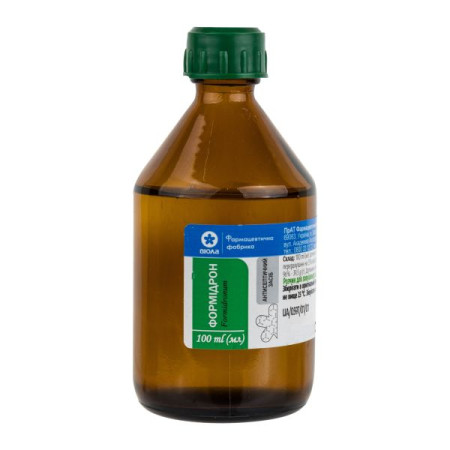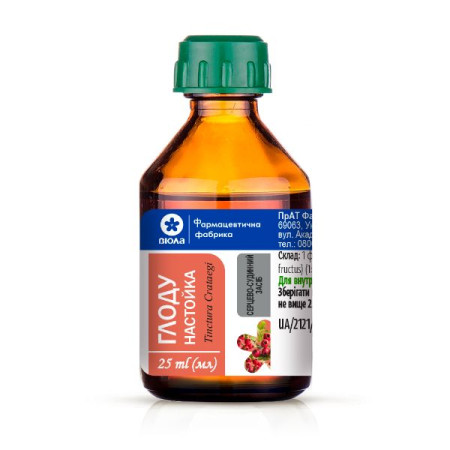Thioctone solution for injection 600 mg/24 ml 24 ml No. 5

Instructions Thiocton solution for injection 600 mg/24 ml 24 ml No. 5
Composition
active ingredient: thioctic (α-lipoic) acid;
1 bottle of solution contains 952.2876 mg of trometamol thioctate (equivalent to 600 mg of thioctic (α-lipoic) acid);
excipients: trometamol, 1 M trometamol solution, water for injection.
Dosage form
Solution for injection.
Main physicochemical properties: clear yellowish solution, practically free from visible particles.
Pharmacotherapeutic group
Drugs affecting the digestive system and metabolic processes. Thioctic acid. ATC code A16A X01.
Pharmacological properties
Pharmacodynamics
Thioctic acid (α-lipoic acid) is a vitamin-like substance of endogenous origin that functions as a coenzyme in the oxidative decarboxylation of α-keto acids.
Hyperglycemia caused by diabetes leads to the accumulation of so-called advanced glycation end products. This process leads to reduced endoneural blood flow and endoneural hypoxia and ischemia, accompanied by increased production of oxygen free radicals, which in turn damage the peripheral nerve. There is also a decrease in the level of antioxidants (such as glutathione) in the peripheral nerves.
α-Lipoic acid intervened in these processes, leading to a decrease in the formation of glycation end products, improved endoneural blood flow, and increased physiological levels of antioxidants such as glutathione, which is an antioxidant for free oxygen radicals in the diabetic nerve.
These effects observed in the experiment support the theory that peripheral nerve function can be improved by α-lipoic acid. This applies to sensory disturbances in diabetic polyneuropathy, manifested by dysesthesia, paresthesias such as burning sensations, pain, numbness, and "creeping sensations."
Pharmacokinetics
The primary transformation of α-lipoic acid occurs in the liver. There is no significant difference in the systemic availability of α-lipoic acid between patients. α-lipoic acid is biotransformed by side-chain oxidation and conjugation, and is excreted mainly by the kidneys.
The plasma half-life of α-lipoic acid in humans is about 25 minutes, and the total plasma clearance is 9–13 ml/min per kg. At the end of a 12-minute infusion of 600 mg, the plasma concentration is about 47 μg/ml. In animal studies (rats, dogs), radioactive labeling has shown that renal excretion is predominantly in the form of metabolites, accounting for 80–90%. In humans, only a small fraction of the intact substance is found in the urine. Biotransformation occurs mainly by oxidation of the side chains (beta-oxidation) and/or S-methylation of the corresponding thiol groups.
Indication
Treatment of symptoms of peripheral (sensorimotor) diabetic polyneuropathy.
Contraindication
Thioctone is absolutely contraindicated in patients with known hypersensitivity to thioctic acid or to other components of the drug.
Interaction with other medicinal products and other types of interactions
With simultaneous treatment with Thioctone and Cisplatin, the effectiveness of the latter is reduced.
With simultaneous treatment with Thioctone, the hypoglycemic effect of insulin and/or other antidiabetic agents may be enhanced. In this regard, especially at the beginning of treatment with thioctic acid, regular monitoring of blood sugar levels is indicated. To prevent the appearance of symptoms of hypoglycemia, in individual cases it may be necessary to reduce the dose of insulin and/or oral antidiabetic agents.
WARNING
Regular alcohol consumption is a significant risk factor for the development and progression of the clinical picture of neuropathy, and may thus negatively affect the treatment process with Thioctone. Therefore, patients with diabetic polyneuropathy are usually advised to refrain from alcohol consumption if possible. The restriction also applies to breaks between courses of treatment.
Application features
With parenteral administration of Thioctone, hypersensitivity reactions of varying severity, up to anaphylactic shock, have been observed (see section "Adverse reactions"). Therefore, during treatment with the drug, patients should be under close medical supervision. If the first signs appear (such as itching, nausea, weakness), treatment should be discontinued immediately and, if necessary, appropriate assistance should be provided.
Cases of Insulin Autoimmune Syndrome (IAS) have been reported during treatment with thioctic acid. Patients with the human leukocyte antigen genotype HLA-DRB1*04:06 and HLA-DRB1*04:03 alleles are more susceptible to the development of IAS during treatment with thioctic acid. The HLA-DRB1*04:03 allele (IAS susceptibility: 1.6) was particularly prevalent in Caucasians with a higher prevalence in southern than northern Europe and the HLA-DRB1*04:06 allele (IAS susceptibility: 56.6) was particularly prevalent in Japanese and Korean patients. Insulin Autoimmune Syndrome should be considered in the differential diagnosis of spontaneous hypoglycemia in patients during treatment with thioctic acid (see section "Adverse Reactions").
Use during pregnancy or breastfeeding
The use of thioctic acid during pregnancy is not recommended due to the lack of relevant clinical data.
There is no data on the penetration of thioctic acid into breast milk, therefore its use during breastfeeding is not recommended.
Ability to influence reaction speed when driving vehicles or other mechanisms
Thioctone has no or negligible effect on the reaction rate when driving or operating other mechanisms.
Method of administration and doses
The basis of treatment for diabetic polyneuropathy is optimal diabetic control.
The dose and duration of treatment are determined by the doctor individually.
In the presence of symptoms of peripheral (sensorimotor) diabetic polyneuropathy, the recommended daily dose for adults is 24 ml of injection solution (corresponding to 600 mg of thioctic acid per day) intravenously.
Intravenous administration can be done without dilution using an injection syringe over a period of at least 12 minutes.
During the initial period of treatment, the injection solution should be administered intravenously for 2–4 weeks.
Infusion rules.
Only 0.9% sodium chloride solution should be used to prepare the infusion solution!
The drug should be administered intravenously drip over 30 minutes, before which the vial of Thiocton should be diluted in 250 ml of 0.9% sodium chloride solution.
Since the active substance is sensitive to light, the solution for short-term infusion should be prepared immediately before use. The infusion solution should be protected from light (e.g. with aluminum foil). The infusion solution protected from light is suitable for approximately 6 hours.
Care must be taken to ensure that the infusion time lasts at least 12 minutes.
It is recommended to continue treatment with α-lipoic acid in the form of oral forms of thioctic acid at a dose of 600 mg per day.
Children
Do not use on children.
Overdose
In case of overdose, nausea, vomiting, and headache may occur.
As a result of accidental or intentional use of thioctic acid in a dose of 10-40 g during alcohol intoxication, isolated cases with severe signs of intoxication, including fatal outcome, were observed. Clinical manifestations of intoxication were manifested in the form of psychomotor impairment or dizziness with subsequent generalized convulsions and the development of lactic acidosis. The consequences of thioctic acid intoxication are hypoglycemia, shock, rhabdomyolysis, hemolysis, disseminated intravascular coagulation (DIC), bone marrow suppression and multiple organ failure.
Treatment measures in case of intoxication.
Even if significant Thioctone intoxication is suspected (e.g., more than 10 tablets of 600 mg for adults and more than 50 mg/kg of body weight for children), the patient should be hospitalized immediately and standard measures for the treatment of intoxication should be initiated (such as inducing vomiting, gastric lavage, administration of activated charcoal). Treatment of generalized convulsions, lactic acidosis and other life-threatening consequences of intoxication should be based on the principles of modern intensive care and be aimed at eliminating symptoms.
Currently, no advantages of hemodialysis, hemoperfusion, or filtration methods in the forced removal of thioctic acid have been identified.
Side effects
Side effects that may occur while taking this medicine are classified according to the following frequency: very common (≥ 1/10), common (≥ 1/100 - < 1/10), uncommon (≥ 1/1000 - <1/100), rare (≥ 1/10000 - <1/1000), very rare (<1/10000), unknown (cannot be determined from the available data).
Blood and lymphatic system disorders: very rarely - thrombopathy.
Immune system disorders: Not known: allergic reactions such as skin rash, urticaria, eczema and itching; anaphylactic reactions.
Frequency unknown: insulin autoimmune syndrome (see section: "Special warnings and precautions for use").
Metabolism and nutrition disorders: very rare – hypoglycemia*.
Nervous system disorders: infrequently - dysgeusia; very rarely - apoplexy, convulsions, headache*, dizziness*, sweating*.
On the part of the organs of vision: very rarely - diplopia, visual disturbances.
Gastrointestinal: infrequently - nausea and vomiting.
Skin and subcutaneous tissue disorders: very rarely – purpura.
General disorders and local reactions: very rare - reactions at the injection site.
*Due to the improved glucose excretion, a decrease in blood glucose levels may occur very rarely. Symptoms of hypoglycemia such as dizziness, sweating, headache and blurred vision have been reported.
Reporting of suspected adverse reactions.
Reporting of adverse reactions after registration of a medicinal product is important. This allows monitoring of the benefit/risk ratio of the medicinal product. Medical and pharmaceutical professionals, as well as patients or their legal representatives, should report all cases of suspected adverse reactions and lack of efficacy of the medicinal product via the automated pharmacovigilance information system (https://aisf.dec.gov.ua).
Expiration date
3 years.
The product should be used immediately.
Protected from light, the infusion solution diluted in saline is suitable for use within 6 hours.
Storage conditions
Store in the original packaging in order to protect from light at a temperature not exceeding 25 ° C. Do not freeze. Keep out of the reach of children.
Incompatibility
Thioctic acid in vitro reacts with complexes of metal ions (e.g., cisplatin). Thioctic acid forms complex compounds with sugar molecules (e.g., levulose solution). Thioctone is incompatible with glucose solution, Ringer's solution, and with solutions known to react with SH groups or disulfide bonds.
Only 0.9% sodium chloride solution should be used as a carrier solution for Thioctone infusions.
Packaging
24 ml in a bottle, 5 bottles in a contour blister pack and a cardboard pack.
Vacation category
According to the recipe.
Producer
K.T. Rompharm Company SRL / SC Rompharm Company SRL
Location of the manufacturer and address of its place of business
Eroilor str. No. 1A, Otopeni city, 075100, county Ilfov, Romania.
Applicant
"FORCE-PHARMA DISTRIBUTION" LLC.
Applicant's location
Ukraine, 03127, Kyiv, Holosiivskyi Ave., 132.
There are no reviews for this product.
There are no reviews for this product, be the first to leave your review.
No questions about this product, be the first and ask your question.
















